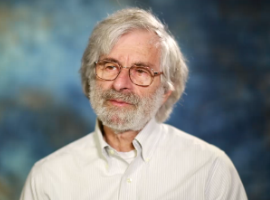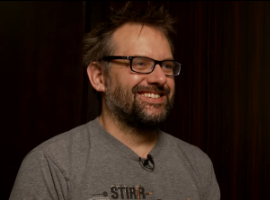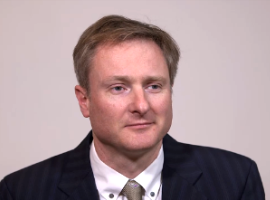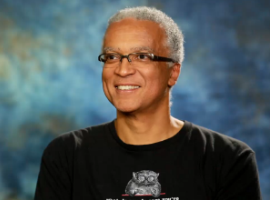InfoQ Homepage Architecture & Design Content on InfoQ
-
Jon McKay on Building Tessel Boards and What We Can Expect From Tessel Soon
The Internet of Things is right around the corner and it's very much about connected devices, sensors and gathering and leveraging data. The Tessel Board is programmable in JavaScript and makes it extremely easy to try out programming connected devices, send sensor data to the cloud or even control your elevator with a text message. And there's more to expect in the future, Jon tells us.

-
Jacob Fahrenkrug on Building a Secure Platform for the Smart Home
The Internet of Things is just around the corner and it will massively impact our lives. Most of the devices in our homes will become connected and collect data or react to certain events. Currently it is still uncertain, how personal data can be protected and leveraged for crowd sourcing and swarm intelligence at the same time. Jacob is sharing the ideas that his company Yetu has to clarify this

-
Learning Fast at Spotify
Simon Marcus discusses the value of a learning environment in which learning from failure is valued. Simon discusses how Spotify approaches consensus within its teams and how experimentation of team make-up and tasking is not frowned upon.

-
Leslie Lamport on LaTeX, Paxos, Distributed Systems, TLA and TLA+
Turing Award winner Leslie Lamport talks to Charles Humble about LaTeX, Paxos, his "Time, Clocks and the Ordering of Events in a Distributed System" paper, TLA and TLA+

-
Peter Bourgon on CRDTs, Go at SoundCloud
Peter Bourgon discusses distributed programming with commutative replicated data types (CRDTs), how they work, what problems they solve, and his experience with using the Go language at SoundCloud.

-
Jez Humble on Continuous Delivery and Lean Enterprise
In the last ten years we have seen the emergence of things like lean startup, continuous delivery, DevOps, and all these movements around how to not only build things correctly, but also around making sure to build the correct thing. Now it's time to help leaders in large enterprises to understand how to move faster and adapt to changing circumstances.

-
Todd Montgomery Discusses Java 8 Lambdas and Aeron
Understanding how Java 8 lambdas capture state can help programmers create more efficient and elegant designs. Todd Montgomery discusses his findings in this space and also unveils Aeron, a new open source messaging library for enabling communication between high volume, low latency applications.

-
David Anderson on Adopting Kanban, Modern Management Framework and Enterprise Services Planning
At Lean Kanban France 2014 David Anderson talked about the history of Kanban and new developments. InfoQ interviewed David on Kanban adoption, using Real Options with Kanban, the Modern Management Framework and about software for Enterprise Service Planning.

-
Jeff Lindsay on Best Practices for Working with Containers and Docker
Jeff Lindsay explains the difference between virtualization and containers, what Docker brings to the table, best practices for using containers and what to avoid, and much more.

-
Chris Richardson Discusses CQRS and Event Sourcing via Docker
Chris discusses the rise of CQRS and Event Sourcing as a solution for all domains. With the advent of Docker, applications that manage complex domains can be built tested and deployed in minutes. Chris talks about the reasons for choosing a CQRS and Event Sourced solution as well as how the addition of Docker can help an organization embrace Continuous Delivery by using existing tools.

-
Olaf Lewitz on De-Scaling Your Organization and Using Temenos
Olaf Lewitz joins us to discuss how you can safely de-scale your organization and on using Temenos and Kris maps to focus on the core values of your organization.

-
Interview with Erin Schnabel on the Liberty Profile
Erin Schnabel, developer lead of the WebSphere Liberty Profile, spoke to Alex Blewitt at QCon New York about the modular architecture behind the Liberty Profile, and what benefits this has brought both to end users and the developer team. She also highlighted how the the transition from monolithic to modular started with the configuration and broke down dependencies between services.
